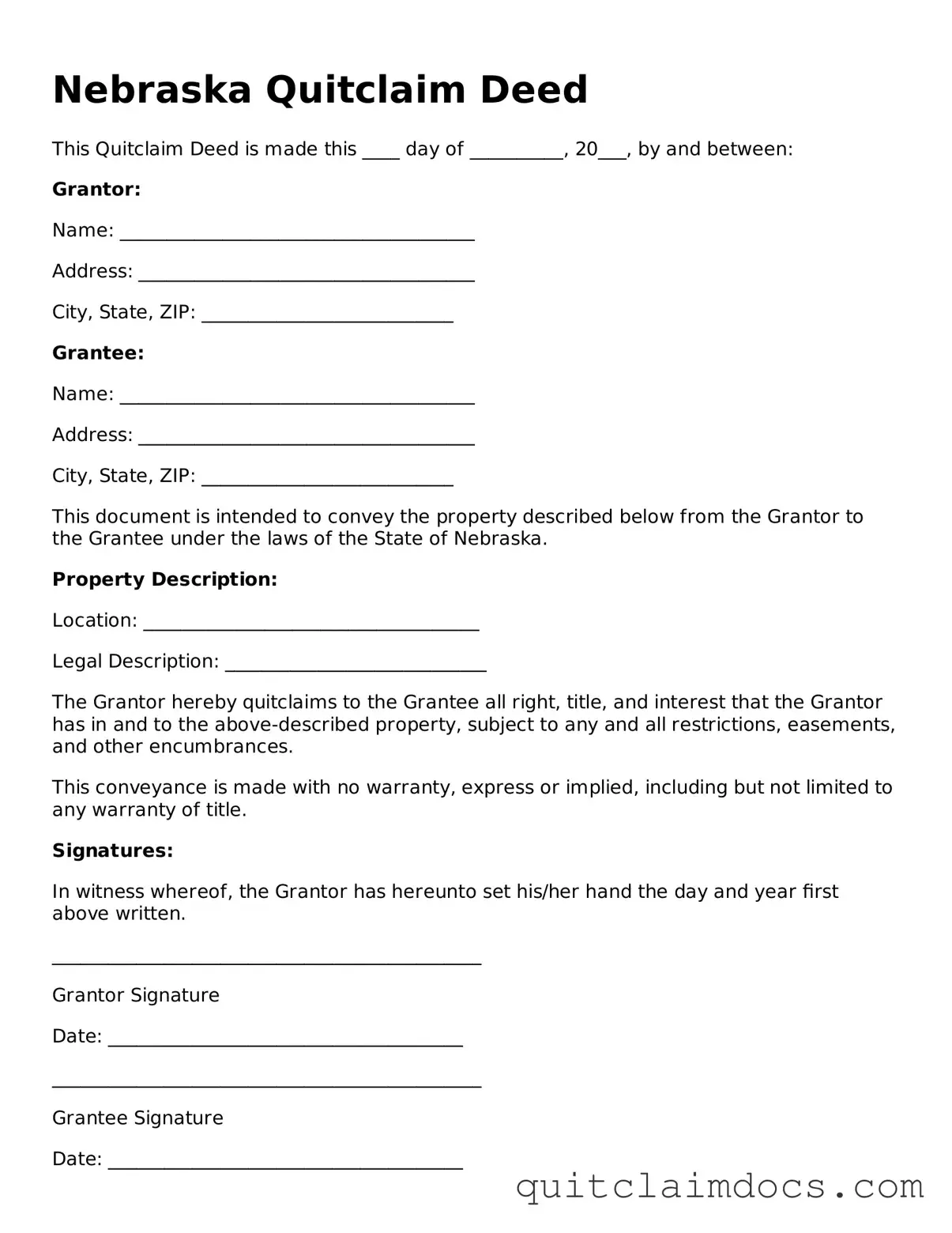Nebraska Quitclaim Deed
This Quitclaim Deed is made this ____ day of __________, 20___, by and between:
Grantor:
Name: ______________________________________
Address: ____________________________________
City, State, ZIP: ___________________________
Grantee:
Name: ______________________________________
Address: ____________________________________
City, State, ZIP: ___________________________
This document is intended to convey the property described below from the Grantor to the Grantee under the laws of the State of Nebraska.
Property Description:
Location: ____________________________________
Legal Description: ____________________________
The Grantor hereby quitclaims to the Grantee all right, title, and interest that the Grantor has in and to the above-described property, subject to any and all restrictions, easements, and other encumbrances.
This conveyance is made with no warranty, express or implied, including but not limited to any warranty of title.
Signatures:
In witness whereof, the Grantor has hereunto set his/her hand the day and year first above written.
______________________________________________
Grantor Signature
Date: ______________________________________
______________________________________________
Grantee Signature
Date: ______________________________________
This Quitclaim Deed must be recorded in compliance with the Nebraska Revised Statutes.
